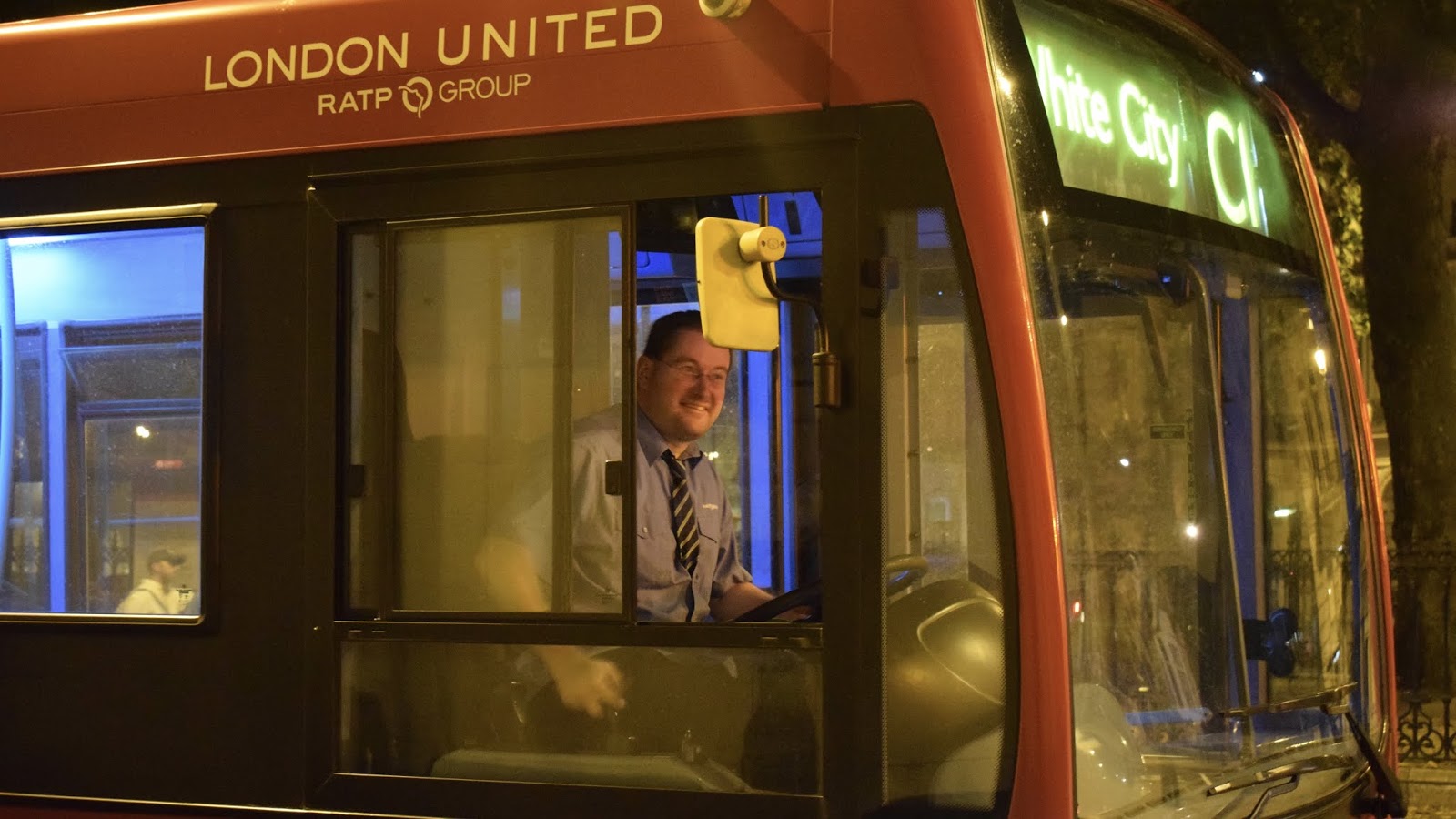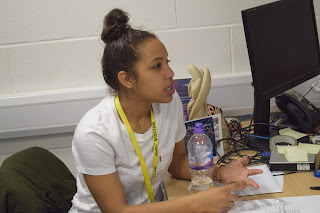We did our first intervention of the project! What began as the 'Bus Stop' intervention has evolved into what we're calling Hospitality in Transit.
What the aim was:
As explained in the previous post about the Bus Stop Intervention, what we wanted to do was produce an experience that would relieve the stigma around communication on transport and generate a positive atmosphere for everyone we came into contact with. We wanted to do this by providing a hospitality service that would have a positive impact on people's day and also act as a conversation starter between us and those around us. Considering our other interventions are bus focused, on this one we decided to shift to an alternative mode of transport so chose a train station. Additionally we wanted one that wasn't over crowded and one that didn't already have a shop so people would engage. After discussing the ones we knew of, we decided on St Johns station. This provided an alternative dimension as it is a very isolated station; only 2 platforms that's well away from the road.
What we actually did:
Wednesday, April 10th was the day we did the intervention. The logistics of providing a hospitality service took some consideration and after discussion, we decided to provide a hot drinks stand for anyone that was passing through. After gathering supplies in the morning, I met Isaiah and we made our way to the station where we set up. We put up some posters around the station to advertise what we were doing and used the posters I had made to draw attention as they had some shocking statistics of the realities of London Transport. Tea and coffee are things that a majority people enjoy and so I hoped it would be a product that most people would say yes to.
How it played out on the day:
Once we were all set up, we needed to begin engaging with those around us. Initially, it took a few minutes for us to figure out how to go about talking to people. Isaiah first went up and asking the conductor if he would like a hot drink, from there we asked passengers that were waiting for their train to arrive and then those getting off the train and leaving the station. As it got closer and closer to evening rush hour, the number of people that engaged with us picked up significantly and turned out to be hugely successful!
Of course the number of people taking tea was great, but it was the conversation that the small offering created that was the success of the day. Whether people accepted or declined to our offer there was always one question, "what's it for?". Our presence on this relatively small station was noticeable and therefore drew people in; they were curious of our intentions and wanted to find out more.
So we explained it to them. That were there with the intention of carrying out our aim -
to relieve the stigma of interaction on public transport. We wanted to encourage communication of all types on the platform whether it was between the passengers with each other or the passengers and the station staff. We had numerous interactions throughout the time we where there from 15 minute conversations where people wanted to know more about our University, degree or our modules to 1 minute interactions just to ask people how their day was going. But there were 2 that really stood out to me that I believe really enrapture the point of our intervention that day.
Firstly was with one of the platform conductors. This gentleman was named Nana and was one of two conductors running St Johns station. We started out by providing him with a beverage, asking about his day and explaining to him our intervention. He was discussing with us which stations he thought we'd have success at etc. However, after a while we really got an insight into what his job was like day to day. When we asked whether passengers interacted with him we got a varied response but a particularly interesting point was when Nana said that his interactions with passengers increased when it was dark; passengers tended to stand closer to him on whatever part of the platform he was on during the night. This was an aspect I hadn't thought of, probably something I maybe do subconsciously. Here platform conductors are taking on another responsibility, whether they chose to or not, something we passengers take for granted. Although it was just a small thing Nana mentioned, I thought it was a really interesting point.
After some more small talk and Nana encouraging passengers to take a beverage on our behalf, he told us a story from just the week previously when he had been the only one working at the station. Nana spend most of his shift taking a women down from taking her own life by jumping in front of a train. He described how he noticed her down at the end of the platform, went down to confront her and talk to her in order to keep her engaged. Nana had to physically restrain the lady at one point, and managed to communicate with the train conductors office through a driver stationed at the platform to have the electricity to the whole station shut down. For one moment, the lady was able to escape Nana's watch and did manage to jump on the tracks from the platform but due to Nana's quick thinking and amazing conduct, she had no injuries and the police arrived soon after. We spoke to two conductors during our intervention and both had experienced, seen or knows of someone who has been involved in such a situation. This is something that I don't think many people realise is a real part of the job of working on public transport; something which can have a serious impact on a persons life. Hospitality on transport allowed us to talk to Nana, hear his story and allow his to share it. This is some effort from us to allow staff to tell of what it's really like to work on transport and share the realities of the job to those who take the TFL staff for granted.

Other was a male and female, one of which was on crutches. This interactions was a lot shorter and they had just got off a train and where obviously intending to leave the station immediately. But with Nana's help, they agreed to take our offer of tea. When making the tea, I enquired to the lady how her journey and day had been, to which she replied 'not great'. However after just a few minutes of just talking, the five of us were laughing and smiling. Although it wasn't much, I truly hope and believe that small interaction helped to improve their day, putting a smile on their faces even if only for a few minutes.

All together, I think the intervention was real successful because it was simple. There was no pressure for the passengers or staff to engage but it was there if they wanted it, if it would contribute positively to their day. Our lengthy discussion hopefully improved his shift a bit, and showed to those around us that engaging in interaction with TFL staff is not a taboo but actually welcomed. Additionally, talking to passengers allowed us to open up the channels for communication between passengers and giving them tea would hopefully encourage them to pass the act of kindness forward so that they too contribute kindness to others they interacted with during the day. Thanks Isaiah for all your help in making the intervention a success and ensuring we had a great impact on the platform.




















































